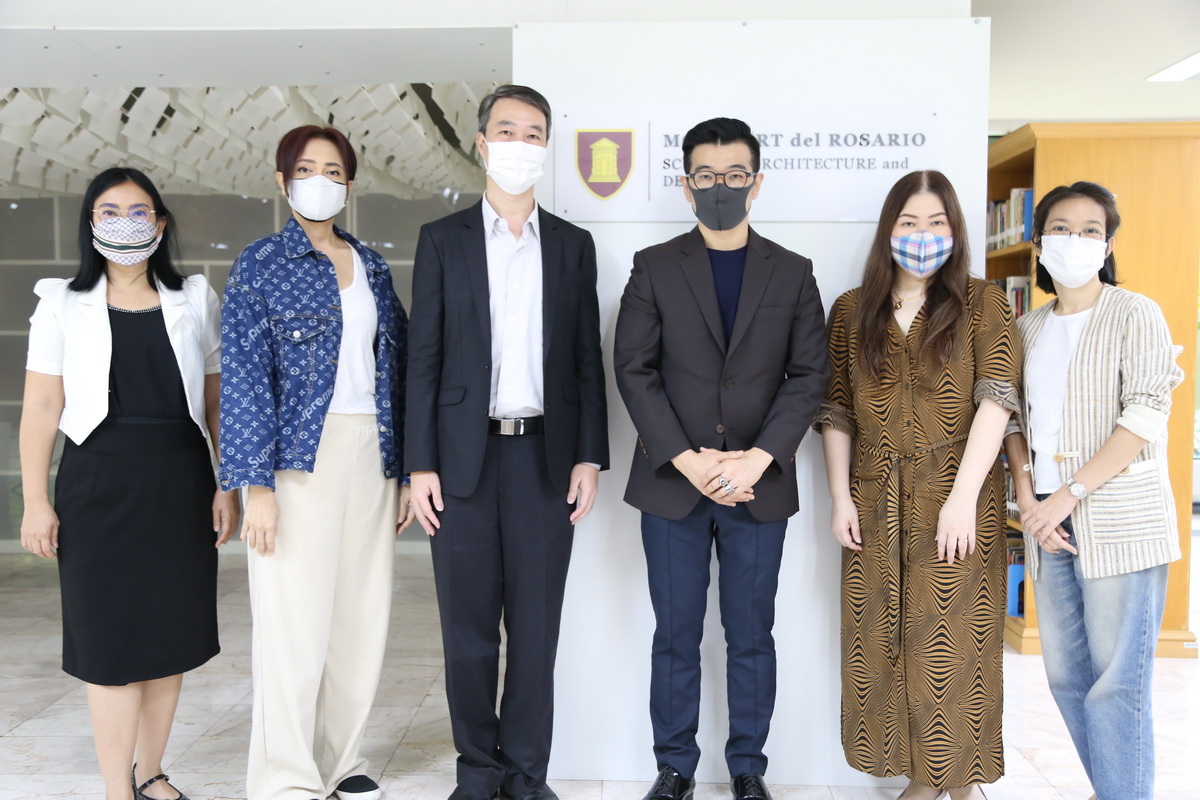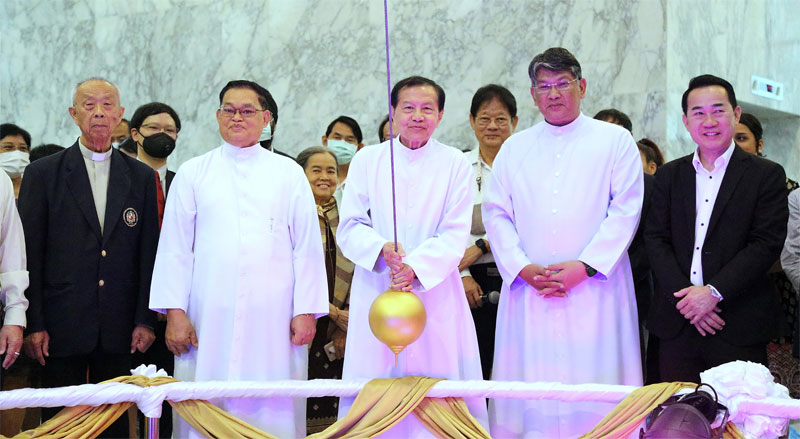
The “Bro. Martin Pendulum” Officially Launched
The AU physic and scientific monumental symbol of “Pendulum” installed on the 1st floor of the Vincent Mary School of Engineering, Suvarnabhumi Campus, was officially inaugurated on November 11, 2020.
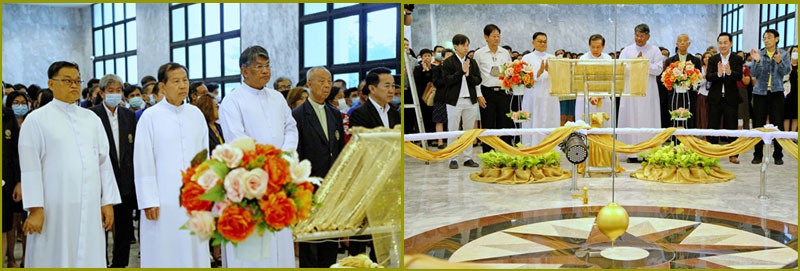

Unveiling the hanging round ball-like “Pendulum”, Rev. Bro. Dr. Bancha Saenghiran, President-Rector Magnificus, stressed about its scientific and astronomical significance, human’s curious learning and observation; testifying of the Antithesis of the Geocentric Model or theory of a French Physicist, Jean-Bernard-Leon Foucault, who mounted a large pendulum using an iron ball under the central dome of the Pantheon in Paris to prove that the earth is not the center of the universe and that the Earth spins or revolves on its axis eastward or counterclockwise.
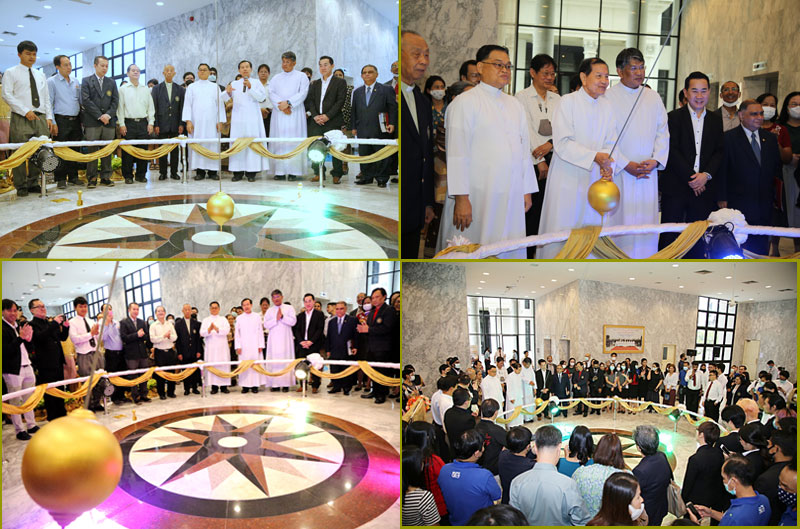
Citing the genius creativity of Rev. Bro. Dr. Prathip Martin Komolmas, President Emeritus, who visited the Patheon in the City of Paris, resolved to initiate the idea of creating the “Bro. Martin Pendulum” as the testimony to the unique human’s astronomical discovery, the rector also thanked all the event’s organizers and participants.

The Inauguration ceremony was witnessed by the AU management members, administrators, faculty, staff and students, including the AUSO President, various student committee members, President of AU Alumni Association and honored guests.
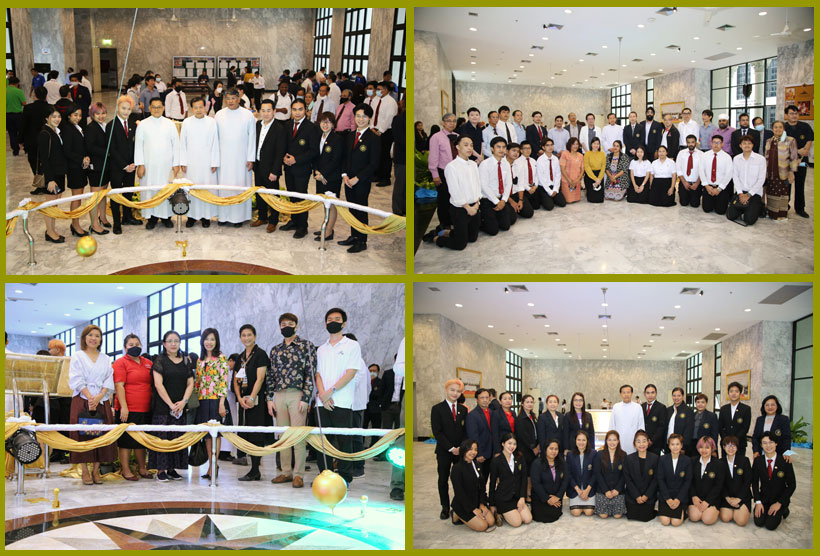
The students of Louis Nobiron School of Music also entertained the audience enlightening and adding to the joyous climax of momentous occasion.

Foucault’s pendulum: The Antithesis of the Geocentric Model
The ancients observed the Sun, Moon, other planets and stars transiting from east to west in the same direction every day (simply called the star moving forward). As such, it was then widely believed that the Earth was the center of the universe (geocentric model) and orbited by the stars and other planets. However, there were a number of unexplainable phenomena.
For instance, they observed retrograde movement of planets, a problematic observation later made clear by the theory of the Polish astronomer Nicolaus Copernicus, the author of a groundbreaking book published in 1543, stating that the Sun is the center of the system (heliocentric model) and is surrounded by the planets, including Earth, which orbit around it.
He also proposed that the Earth rotates around itself taking one day for each rotation, allowing us to see sunrise and sunset. He also pointed out that if one were floating in Space over the North Pole, one could easily notice the Earth spinning around itself eastward or counterclockwise.
Copernicus’ antithesis to the ideas of the day dramatically shocked the world at that time, and thus underwent a series of tests and proofs until it was later recognized and accepted by great scientists like Galileo and Newton. Finally, another scientist came up with a convincing experiment to prove that the Earth revolves around itself.
His name was Jean-Bernard-Leon Foucault, a French physicist, who was famous for successfully conducting one of the early experiments to measure the speed of light, and was the first to discover eddy currents by inventing a device called a gyroscope.
Source: https://66south.com/Foucault/
In1851 Foucault mounted a large pendulum using a 220-foot long steel wire, suspending a 62-pound iron ball under the central dome of the Pantheon in Paris. He then set it in motion, swaying the pendulum back and forth. To mark how it moved, he attached a stylus to the ball and placed a ring of damp sand on the floor below.
Source: https://www.school-for-champions.com/science/images/pendulum-foucault.jpg
When the pendulum was swinging for only 5-6 minutes, the audience watched in awe as the pendulum, instead of moving back and forth in the same level plane, it inexplicably appeared to rotate in a circle, leaving a slightly different trace with each swing. Actually it was the floor of the Panthéon, or the Earth itself, that was slowly moving, and Foucault had shown, more convincingly than ever, that the earth revolves on its axis.
Source: https://www.geographyrealm.com/geography-of-foucault-pendulums/
At the latitude of Paris, the pendulum's path would complete a full clockwise rotation every 30 hours; on the Southern Hemisphere it would rotate counterclockwise, and on the Equator it wouldn't revolve at all. Recently in 1984 and 2001, when modern-day scientists replicated Foucault’s pendulum experiment at the South Pole, they discovered the period of rotation was 24 hours.
This means the time it takes for a complete rotation depends on the latitude of the experiment.
Source: https://twistedphysics.typepad.com/cocktail_party_physics/images/2007/07 /11/h05.jpg
Bibliography
Johnson, G. (2002). Here They Are, Science's 10 Most Beautiful Experiments. https://www.nytimes.com/2002/09/24/science/here-they-are-science-s-10-most-beautiful-experiments.html?pagewanted=all&src=pm
View more related photos

